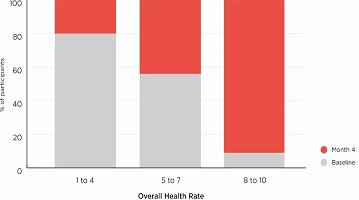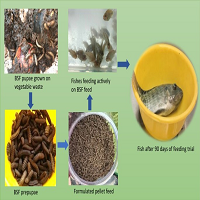Chronic kidney disease (CKD) is a clinical syndrome, characterized by a progressive decline of renal function. CKD is associated with a wide range of metabolic abnormalities including hypertension, anemia, acidosis, and mineral bone diseases.1 The progression of CKD may lead to end-stage renal diseases. CKD affects nearly 500 million people worldwide and thus has become a global public health concern. While the pathogenesis of CKD remains poorly understood, accumulating studies have revealed that the endoplasmic reticulum (ER) stress contributes to the onset and progression of CKD including renal fibrosis, which can lead to end-stage renal disease, independent of the original cause of CKD.1–8
ER is an organelle responsible for protein synthesis, folding, assembly, modification and secretion. Numerous adverse factors, such as oxidative stress, energy depletion, Ca2+ depletion, overproduction of misfolded or unassembled proteins, altered glycosylation, ischemia/ hypoxia and inflammation, can disturb ER homeostasis leading to accumulation of misfolded proteins in the ER lumen, a condition termed ‘ER stress’.9 To clear misfolded and aggregated proteins, cells have evolved a series of evolutionarily conserved signal machineries for orchestrating adaptive responses to maintain the ER homeostasis. One of these machineries is the unfolded protein response (UPR) which is executed by three ER transmembrane protein sensors (Figure 1): ER kinase (PKR)-like ER kinase (PERK), inositol-requiring kinase 1 (IRE1), and activating transcription factor 6 (ATF6).1,2,9 Upon ER stress, an ER lumen resident protein, BiP (binding immunoglobulin protein chaperon, or glucose-regulated protein 78) dissociates from these protein sensors and binds to misfolded proteins, the first step that triggers the UPR pathways. PERK activation results in the phosphorylation and inhibition of eIF2α, a component of the translation initiation complex, thereby attenuating protein translation to decrease protein load on the ER. Activated IRE1 splices XBP1 mRNA, which in turn induces transcription of different genes involved in the ER-associated degradation pathway. This IRE1-mediated arm targets misfolded or unassembled proteins to ubiquitin-proteasomal and/or autophagylysosomal machineries for degradation. Additionally, UPR activation induces translocation of ATF6 to the Golgi and its cleavage by site 1 and site 2 proteases in the Golgi.1,2 The cytosolic, DNA-binding fragment of ATF6 then traffics to the nucleus, where it activates the transcription of ER chaperones and enzymes that promote protein folding. Consequently, activated UPR-reduces global protein synthesis, enhances degradation of misfolded proteins, and increases the ER protein-folding capacity. Activation of the UPR may alleviate ER stress and restore ER homeostasis, thereby promoting cell survival. However, if pathogenic stimuli are severe and persistent and ER stress cannot be rescued, excessive activation of the UPR will initiate pro-apoptotic pathways to eliminate the stressed cells.9 In this case, the PERK arm of the UPR may also trigger activation of ATF4, a transcription factor that increases the transcription of pro-apoptoticgenes such as CHOP (CCAAT-enhancer-binding protein homologous protein) and decreases antiapoptotic genes such as B-cell lymphoma 2 (Bcl-2). 1–3,8 Furthermore, the IRE1α arm may also activate Caspase 12 (rodents)/Caspase 4 (humans) and c-Jun N-terminalkinase (JNK) phosphorylation, leading to initiation of pro-apoptotic pathways.3 Thus, the UPR is a double-edged sword acting as either a cell-protective machinery during mild ER stress or a cell-destructive terminator during severe or long-term ER stress. Interestingly, accumulating evidence has shown the association of ER stress and dysregulated UPR with the pathogenesis of CDK.1–8
Several lines of evidence from clinical and experimental studies have revealed that the accumulation of misfolded proteins of the slit diaphragm elicits ER stress-associated renal injury and proteinuria.1,2 It has been demonstrated that various pathogenic factors, such as proteinuria, hyperglycemia, and uremic toxins, induce UPR-mediated cell apoptosis, compromise the repair capacity of tubular epithelial cells, and accelerate the progression of CKD.1,2 Chiang et al5 reported that ER stress-induced excessive activation of UPR leads to tubular cell death and promotes tubulointerstitial fibrosis in a rat model, which can be alleviated through the optimization of UPR activation by an angiotension receptor blocker, Candesartan. Proteinuria can induce severe tubulointerstitial injury, leading to end-stage renal disease in CKD.6,7 El Karoui et al8 demonstrated that albumin activates the UPR via increasing cytosolic calcium in tubular cells, resulting in tubular apoptosis through ATF4-mediated Lipocalin 2 (LCN2) modulation. LCN2, a small, secreted iron-transporting protein, has been considered as a biomarker for endothelial damage, inflammatory processes, and kidney injury.10,11 Induction of ER stress upregulates LCN2 expression in human prostate cancer cells, while inhibition of the UPR by 4-phenylbutyric acid remarkably down regulates LCN2 production.11 Intriguingly, a high level of LCN2 was found in proteinuric patients with CKD.8 Animal experiments showed that LCN2 transcription and translation progressively increase in proteinuric mice.8 Downregulation of LCN2 attenuates ER stress-induced tubular apoptosis, tubulointerstitial lesions and mortality in proteinuric mice. Furthermore, the inhibition of ER stress by 4-phenylbutyric acid protects kidneys from morphological and functional injury in proteinuric mice.
Additionally, ER stress has been reported to contribute to diabetic-hypertensive kidney diseases. The coexistence of diabetes mellitus and hypertension increases the risk for onset and progression of chronic renal diseases.12 Wang et al showed that diabetes mellitus and hypertension interact synergistically to promote oxidative stress and ER stress, thereby leading to progressive renal injury in a rat model of mild type 2 diabetes mellitus combined with hypertension.12 Treatment of hypertensive-diabetic rat with ER stress inhibitor, tauroursodexycholic acid (TUDCA) for 6 weeks decreases blood pressure, proteinuria, glomerular injury, and oxidative stress, while increasing glomerular filtration rate in the kidneys, suggesting that diabetes mellitus and hypertension synergistically cause renal dysfunction and injury via induction of ER stress.12
Autophagy functions as a pivotal protein degradation machinery that degrades and removes misfolded and aggregated proteins and damaged organelles under both physiological and pathological conditions.9 Activated UPR targets ubiquitinated misfolded and aggregated proteins to autophagosome for degradation under ER stress.9 It has been shown that induction of autophagy protected acute kidney injury13 and suppressed the progression of kidney fibrosis by increasing mature TGF-β1 degradation.14 Recently, Du et al14 demonstrated that Sphingosine kinase 1 protects renal tubular epithelia cells from fibrosis via activation of autophagy.
Collectively, ER stress and dysregulated UPR are closely associated with the pathogenesis of CKD. Targeting the components of the UPR machinery to optimize UPR activity and alleviating ER stress have been considered to be promising strategies for treating or delaying the progression of CKD.








